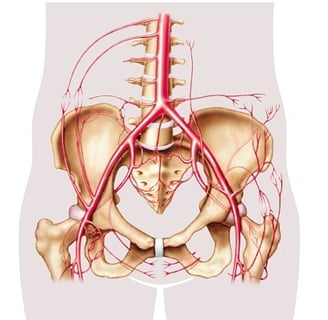What You Need to Know About Leriche Syndrome: Causes, Symptoms, and Treatment
Leriche Syndrome, also known as aortoiliac occlusive disease, is a condition that primarily affects the blood flow in the lower part of the body. Named after the French surgeon René Leriche, who first described it in 1940, this syndrome is a critical yet often overlooked vascular condition. Let’s break it down in an engaging, easy-to-understand way.
VASCULAR
Rishwin A R
1/6/20252 min read


What Is Leriche Syndrome?
Leriche Syndrome occurs when the abdominal aorta or the iliac arteries (major blood vessels supplying blood to the lower limbs) become partially or completely blocked. This obstruction leads to reduced blood flow to the pelvis and legs, causing a cascade of symptoms that can significantly affect a person’s quality of life.
Causes of Leriche Syndrome
Understanding the root causes can help in early detection and prevention. Some of the major causes include:
Atherosclerosis: The buildup of plaque in the arteries is the most common cause.
Thrombosis: Formation of blood clots can also block these arteries.
Congenital abnormalities: Rare structural issues in the aorta or iliac arteries.
Inflammatory conditions: Diseases like Takayasu arteritis can contribute to arterial blockages.
Risk factors such as smoking, high cholesterol, diabetes, and hypertension significantly increase the likelihood of developing this condition.
Symptoms of Leriche Syndrome
The symptoms often vary depending on the severity of the blockage but typically include:
Claudication: Cramping pain in the buttocks, thighs, or calves during exercise.
Erectile dysfunction: A common but under-discussed symptom in men.
Weak pulses: Diminished or absent pulses in the legs or feet.
Coldness or numbness: Especially in the lower extremities.
Skin changes: Discoloration, ulcers, or even gangrene in severe cases.
Diagnosing Leriche Syndrome
Diagnosis involves a combination of clinical examination and advanced imaging techniques, such as:
Ankle-Brachial Index (ABI): Measures blood pressure in the arms and legs to assess blood flow.
Doppler Ultrasound: Evaluates blood flow in the arteries.
CT or MR Angiography: Provides detailed images of the affected arteries.
Blood tests: To rule out other underlying conditions like clotting disorders.
Treatment Options
Early diagnosis and treatment can prevent serious complications. The treatment plan typically includes:
1. Lifestyle Modifications
Quitting smoking.
Adopting a heart-healthy diet.
Regular physical activity.
2. Medications
Antiplatelet drugs: To prevent blood clots.
Cholesterol-lowering drugs: Such as statins.
Blood pressure management: Using antihypertensive medications.
3. Surgical Interventions
Bypass surgery: Creating a new pathway for blood flow.
Endarterectomy: Removing the plaque from the artery.
Angioplasty with stenting: Widening the artery and placing a stent to keep it open.
Prevention Tips
Prevention is always better than cure. Follow these tips to minimize your risk:
Stop smoking: The single most effective preventive measure.
Monitor your health: Regularly check blood pressure, cholesterol, and glucose levels.
Stay active: Exercise regularly to improve circulation.
FAQs About Leriche Syndrome
1. Who is at risk of developing Leriche Syndrome?
Individuals with a history of smoking, high cholesterol, or diabetes are at higher risk.
2. Can Leriche Syndrome be cured?
While there’s no definitive cure, lifestyle changes, medications, and surgical treatments can effectively manage the condition.
3. How is Leriche Syndrome different from other vascular diseases?
It specifically involves blockages in the abdominal aorta and iliac arteries, unlike other conditions that might affect different parts of the vascular system.
4. Can it lead to severe complications?
Yes, if untreated, it can cause gangrene, leading to limb amputation in severe cases.
5. Is surgery always necessary?
Not always. Early stages can often be managed with lifestyle changes and medications.
Conclusion
Leriche Syndrome is a serious vascular condition that demands attention and timely intervention. By understanding the symptoms, risk factors, and treatment options, you can take proactive steps to protect your vascular health. If you or someone you know experiences symptoms like leg pain, cold extremities, or weak pulses, consult a healthcare professional immediately. Remember, early action can make all the difference!
Syndromes.xyz
Explore medical syndromes and their details here.
For Educational purposes only
The information on this site is not in any way, replacement for professional advice. Always consult your physician regarding personal queries
Connect
Support
syndromesxyz@gmail.com
© 2024. All rights reserved.
